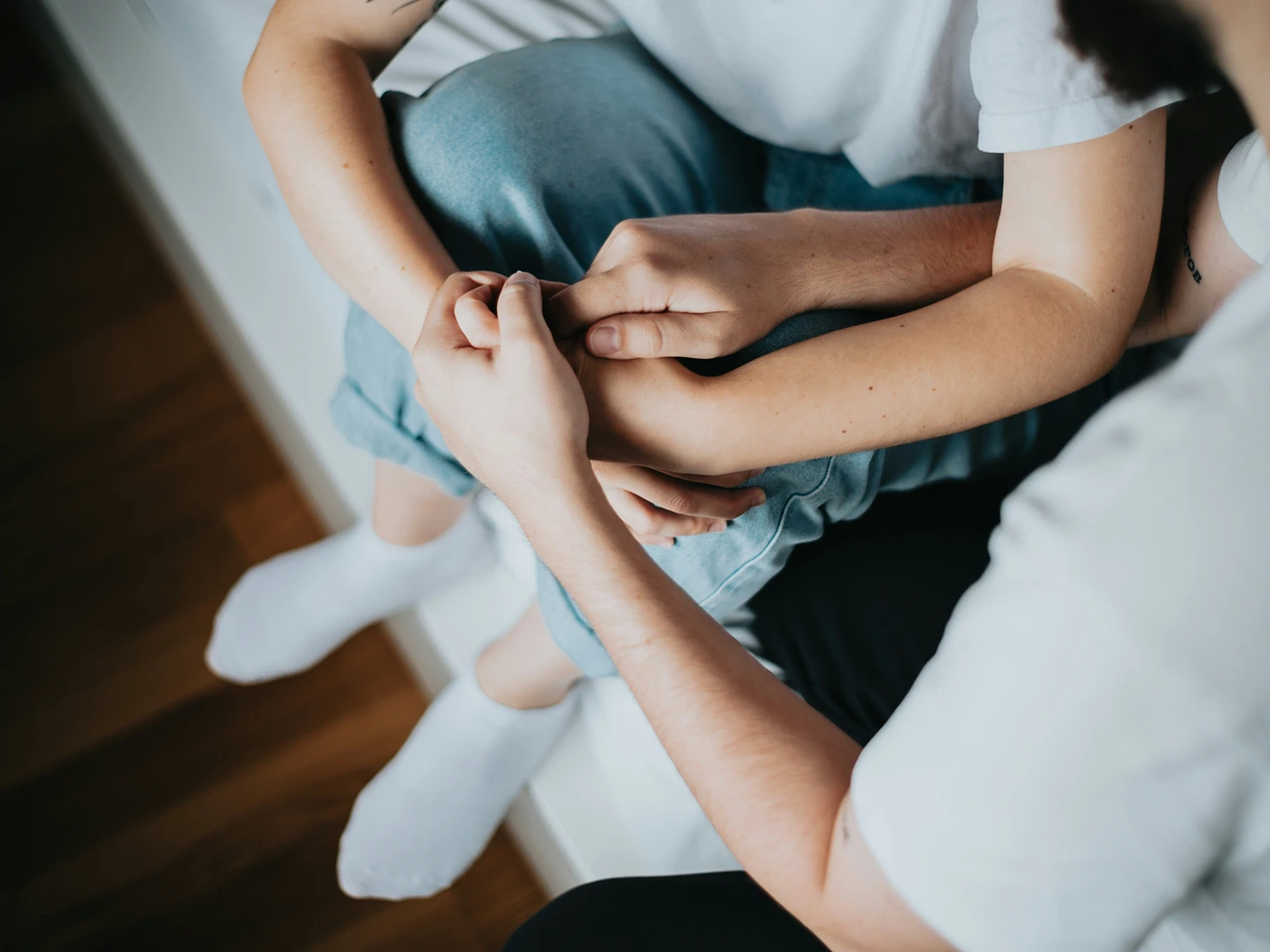
What is Anxious Avoidant Attachment Style?
Learn what the anxious-avoidant attachment style is, the signs, and how it impacts relationships. Explore anxious and avoidant behaviours affecting closeness.

The anxious avoidant attachment style, also known as disorganized attachment, is one of the insecure attachment styles identified in attachment theory, first introduced by John Bowlby. This attachment style represents a complex blend of anxious and avoidant tendencies that can make forming intimate relationships feel both necessary and threatening.
People with this pattern often crave emotional closeness but also pull away when things become too vulnerable or intense. Understanding this style is key to improving relationships, developing self-awareness, and learning how to develop a secure attachment in adulthood.
Understanding Anxious Avoidant Attachment Style

An anxious-avoidant attachment combines two opposing needs—wanting connection yet fearing it. Individuals often experience strong emotional needs for intimacy while simultaneously valuing their independence to an extreme. This inner conflict creates a push-pull dynamic that leads to confusion and distress within relationships.
The roots of this insecure attachment can often be traced back to childhood attachment experiences. When a caregiver is inconsistent, emotionally unavailable, or responds unpredictably to a child’s needs, the child may learn that it’s unsafe to rely on others for comfort. As a result, they may become adults who both crave affection and fear abandonment.
Over time, these early patterns influence how one behaves in adult relationships, especially romantic relationships. An avoidant person might suppress their need for closeness, while an anxious person constantly seeks reassurance. The role of caregivers during early development is important, as their responsiveness (or lack thereof) directly shapes how comfortable a person feels with emotional intimacy later in life.
Anxious Attachment Style vs. Anxious Avoidant
Though they share some similarities, these two attachment styles differ in core motivations and coping mechanisms. An anxious person leans toward pursuing and seeking reassurance, while an avoidant person tends to retreat.
- The anxious style fears being abandoned, whereas the avoidant fears losing independence or closeness.
- The anxious partner often struggles with over-communicating, while the avoidant prefers silence and withdrawal.
- When these two meet, their opposite needs may become a cycle of pursuit and avoidance.
- The anxious partner desires open communication, while the avoidant avoids emotional intimacy, leading to frustration on both sides.
Types of Attachment Styles

Understanding the different types of attachment styles can help explain why people behave the way they do in relationships. Each style shapes how we connect with others, respond to closeness, and cope with feelings of security or rejection throughout life.
Secure Attachment
Individuals with a secure attachment style feel safe giving and receiving love. They’re generally comfortable with emotional closeness and open communication, and can manage distress effectively.
Anxious Attachment
Individuals with an anxious attachment style tend to worry about their partner’s commitment and fear abandonment and rejection. They may feel insecure and often seek reassurance within the relationship.
Avoidant Attachment
Avoidant individuals tend to suppress their emotional needs and value their independence. They are uncomfortable with intimacy, often creating emotional distance to avoid vulnerability.
Anxious-Avoidant (Disorganized) Attachment
The anxious-avoidant dynamic combines both extremes, anxious individuals may crave love while avoidant individuals often withdraw. This back-and-forth results in unstable emotional experiences.
Attachment styles may develop from early interactions with an attachment figure and continue influencing relationships as an adult, affecting everything from romantic partner choices to how people handle rejection or neglect.
Signs You Have an Anxious Avoidant Attachment Style

People with an anxious-avoidant attachment style often experience conflicting emotions in relationships—craving closeness yet fearing it at the same time. This inner push-and-pull can show up in many subtle ways that affect how you connect, communicate, and cope with closeness.
- Fear of Attachment and Closeness: You crave emotional connection yet feel uneasy when a relationship becomes too intimate. This inner conflict often makes you retreat or detach just when things start feeling real.
- Difficulty Trusting Others: You may struggle to believe in others’ sincerity, constantly questioning their intentions or expecting rejection even without clear signs of it. This makes it hard to form a stable and secure type of relationship.
- Push-Pull Behaviour in Relationships: This attachment style often looks like reaching out for validation and reassurance, then pulling back when things start to feel too intense. It can turn into a confusing cycle that leaves both partners feeling uncertain and disconnected.
- Self-Sabotaging Tendencies: Out of fear of rejection or abandonment, you might unconsciously create conflict, withdraw affection, or end things prematurely. These self-protective behaviours often backfire, reinforcing feelings of loneliness.
- Emotional Numbness or Disconnection: When things feel too intense, avoidant individuals may shut down emotionally to maintain control. This emotional suppression acts as a defence against vulnerability and pain.
- High Sensitivity to Rejection: Even small signs of disinterest can set off worry or anxiety, sometimes leading to big emotional reactions. That sensitivity usually comes from a deep fear of not being enough for the person you care about.
- Difficulty Expressing Needs: You may struggle to recognize or communicate your unmet emotional needs, fearing that doing so might push others away. Over time, this leads to emotional ups and downs within relationships, as your unspoken desires build tension and misunderstanding.
Anxious-Avoidant in Relationships

In relationships, the dynamics of anxious-avoidant can be tricky to handle. These two often end up replaying emotional patterns from childhood, creating a connection that feels both deeply magnetic and a little unstable at the same time.
- Common Relationship Patterns: These relationships can feel like an endless loop of chasing and pulling away, a search for reassurance met with distance, leading to feelings of confusion and insecurity for both partners.
- Impact on Partner Selection: An anxious partner may have experienced unstable affection growing up, which often draws them toward an avoidant partner who unknowingly repeats that same emotional inconsistency, keeping the pattern alive.
- Communication Challenges: Both partners often struggle to communicate openly—the anxious one fears being dismissed, while the avoidant one pulls back to avoid discomfort. This disconnect keeps them from really seeing and acknowledging their partner’s emotions and needs.
- Intimacy Issues: The anxious partner often longs for closeness and reassurance but worries about overwhelming the avoidant partner, while the avoidant partner values space and independence—creating an ongoing push-and-pull between connection and distance.
- Conflict Management Style: In arguments, avoidant individuals often pull away or shut down when emotions get intense, while anxious partners may experience panic, making it harder to find resolution.
- Breaking Up Patterns: When conflict escalates, both partners revert to protective habits — the avoidant withdraws to self-soothe, while the anxious pursues or clings — reinforcing the disconnection and deepening the emotional gap between them..
How to Overcome Attachment Issues and Develop a Secure Attachment Style

Healing from insecure attachment patterns is possible, it just takes commitment, patience, and self-awareness. The first step is to notice your attachment dynamics and start making small but consistent changes that move you toward a secure connection and emotional balance.
Therapy and Counselling Options
Working with a therapist specializing in attachment can really help. They can guide you in understanding where your patterns come from and give you tools to start healing. It’s a safe space to explore what shaped your attachment style and learn how to build healthier ways of connecting with others.
Self-Awareness Practices
Start by noticing your triggers and emotional reactions, journaling or simple mindfulness exercises can help you stay aware of what’s coming up for you. These small moments of reflection help you understand why you respond the way you do—and they make it easier to show yourself compassion instead of criticism.
Communication Skills Development
Effective communication is about feeling heard and understood. When you learn to express your needs clearly and calmly, it becomes easier to connect with others—without the fear of rejection or judgment getting in the way.
Building Trust Exercises
Start by letting yourself be a little more vulnerable in safe moments. Trust builds gradually—each time you open up and feel accepted, it strengthens your sense of safety and closeness with your partner.
Emotional Regulation Techniques
When emotions start running high, pause for a moment—take a deep breath, ground yourself, or step away to cool off. Self-soothing things like this can stop conflicts from spinning out and help you feel more steady and in control of how you respond.
Setting Healthy Boundaries
Boundaries are bridges that keep both independence and closeness alive. When you set boundaries clearly and with kindness, you make room for mutual respect and a sense of safety in your relationship.
Creating Secure Relationships
Over time, those small steps really start to add up. With consistency and a bit of openness, you can gradually shift your avoidant habits into more secure, steady ways of loving—ones that feel safe, balanced, and deeply fulfilling.
Final Thoughts
Understanding the anxious-avoidant attachment style means recognizing the patterns that might be holding you back from feeling truly connected to others. This attachment style shows a push-and-pull between wanting closeness and being afraid of vulnerability—a tension that can ease with self-awareness and emotional growth.
Healing starts with noticing your triggers, being open in your communication, and letting yourself trust again, little by little. With time, patience, and the right kind of support, you can move toward a more secure and healthy attachment—one where love feels safe, balanced, and mutual.
Frequently Asked Questions
What does it mean to have an anxious-avoidant attachment style?
The anxious-avoidant attachment style reflects a blend of craving connection while fearing it at the same time.
Conflicting Needs: Those with anxious and avoidant attachment styles often experience both the desire for love and the fear of being hurt.
Push-Pull Dynamic: This style creates a cycle of emotional pursuit and withdrawal that leaves relationships unstable.
Rooted in Childhood: It often develops when caregivers are inconsistent or emotionally unavailable during formative years.
Impact on Intimacy: People with this pattern often long for closeness but pull back when things start to feel too vulnerable.
Path to Healing: Knowing the patterns is the first step toward more stable, healthy emotional connections.
How does attachment theory explain anxious and avoidant behaviours?
Attachment theory helps us understand how early relationships shape emotional bonds and reactions in adulthood.
Foundation of Bonds: Introduced by John Bowlby, it explains how childhood attachment experiences shape adult relationships.
Emotional Modelling: Individuals with anxious tendencies often reflect the same insecurity and inconsistency they grew up around.
Avoidant Reactions: Those with avoidant attachment might pull away to protect their independence and sense of control.
Fear-Driven Responses: Whether it’s emotional withdrawal or clinginess, these reactions usually come from learned fear and unmet needs.
Path Toward Security: Becoming aware of your attachment responses allows you to gradually move toward a healthier attachment style.
Why do people with anxious attachment styles struggle in relationships?
People with anxious attachment often feel deeply invested but easily destabilized by uncertainty.
Emotional Sensitivity: People with anxious attachment styles often worry excessively about being unloved or abandoned.
Insecurity Cycle: A constant need for reassurance can overwhelm their partners and heighten relationship stress.
Fear-Based Behaviour: Their fear of abandonment and rejection often drives clinginess or over-communication.
Partner’s Experience: The partner often feels pressure to meet the needs they may not fully understand.
Building Balance: Healing begins when both partners learn to express needs calmly and practice consistent reassurance.
How do anxious and avoidant partners interact in relationships?
Anxious and avoidant dynamics often create cycles of connection and distance that are difficult to break.
Opposing Needs: An avoidant partner may crave independence just as the anxious one seeks closeness.
Emotional Imbalance: One partner ends up feeling drained, while the other feels ignored or invisible.
Communication Gaps: When one pulls away and the other chases, it just creates more confusion and tension between you.
Intimacy Struggles: One partner wants to feel comfortable with intimacy, while the other fears losing autonomy.
Repair and Growth: Recognizing these contrasting needs can transform conflict into understanding and empathy.
How can you begin healing from anxious-avoidant attachment patterns?
Healing requires awareness, consistency, and willingness to build trust and emotional safety.
Self-Reflection: Begin by understanding your own attachment style and how it influences your reactions.
Therapeutic Support: Talking with a counsellor can help you understand your triggers and work through issues related to anxiety disorder and old emotional wounds.
Emotional Growth: Learning to stay present with vulnerability strengthens your ability to form trust.
Healthy Closeness: Practice mutual respect and open communication to become more comfortable with emotional closeness.
Long-Term Change: Consistent self-work can help you with the struggle to maintain emotional balance, break old attachment patterns, and move closer to genuine connection.
Check out more helpful articles
Lorem ipsum dolor sit amet, consectetur adipiscing elit, sed do eiusmod tempor incididunt ut labore et dolore magna aliqua. Lorem ipsum dolor sit amet, consectetur adipiscing elit, sed do eiusmod tempor incididunt ut labore et dolore magna aliqua.
What Is Romantic Attraction? Understanding How It Shapes Our Feelings and Connections
Romantic attraction affects the way we feel, connect, and form relationships. Learn how this feeling shapes the way we build emotional bonds and how it influences our romantic orientation.

Type A vs Type B Personalities: Traits, Differences, and What Makes Each Personality Type Unique
Learn about Type A vs Type B personalities, their unique traits, key differences, and what makes Type B & Type A personalities distinct and interesting.

Is Online Therapy Just as Effective for Mental Health as In-Person Therapy? Benefits and What to Expect
Learn whether online therapy is just as effective as in-person therapy for improving mental health. Explore its benefits, how virtual therapy works, and what to expect from your sessions.

Contact US
Know who you want to book with?
Book Online HereHave questions about counselling or something else?
Call or email us.
Want help choosing the right therapist? Complete our connect form below.
We are ready and looking forward to meeting you. Get started today by clicking the link below and booking your free 15-minute discovery call. All our services are private and confidential.

Disclaimer: Content on this website is for informational purposes only. Visiting this website does not establish any type of therapist-client relationship with Upstream Counselling or its staff. Information obtained from this site does not substitute for a thorough medical and/or psychiatric evaluation by an appropriately credentialed and licensed professional.








